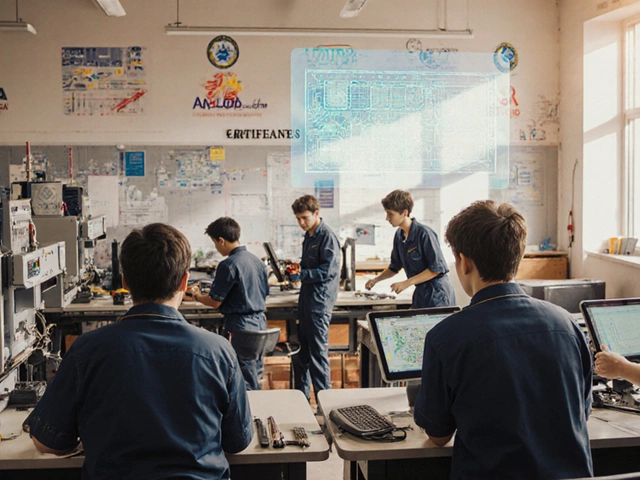CBSE vs American Curriculum: Key Differences and What Matters Most
When parents and students compare CBSE curriculum, the standardized education framework used across most Indian schools affiliated with the Central Board of Secondary Education and American curriculum, a flexible, skill-driven approach common in U.S. public and private schools that emphasizes critical thinking and project-based learning, they’re not just picking a syllabus—they’re choosing a learning philosophy. The CBSE vs American curriculum debate isn’t about which is better. It’s about which fits your child’s goals, personality, and future path.
CBSE is structured, exam-focused, and built for consistency. It follows a clear progression from Class 6 to Class 12, with heavy weight on memorization, standardized testing, and subjects like Math and Science that feed directly into competitive exams like JEE and NEET. It’s the path most Indian families know—rigid, reliable, and deeply connected to top engineering and medical colleges. Meanwhile, the American curriculum is loose by comparison. It doesn’t have one national standard. Instead, it encourages exploration: students take electives, work on long-term projects, and learn through discussion. Skills like communication, collaboration, and creativity are graded as much as test scores. This system prepares students for U.S. universities, where holistic profiles matter more than a single high score.
One big difference? Indian education, a system shaped by centralized boards like CBSE, with high-stakes exams determining career access leans on rote learning. US education system, a decentralized model that varies by state but prioritizes individual growth over uniform outcomes rewards curiosity. If your child thrives under pressure and aims for IIT or AIIMS, CBSE gives them the exact training they need. If they’re more creative, hands-on, or dreaming of a U.S. college, the American curriculum builds confidence through freedom—not just content.
There’s no magic formula. Some Indian families send kids to international schools with American-style teaching but still push them to crack JEE. Others switch systems mid-way because their child burns out on rigid exams. The real question isn’t which system is superior—it’s which one helps your child grow without losing their spark. Below, you’ll find real stories, salary data from U.S. careers, and insights on how each system shapes future opportunities—from engineering in Silicon Valley to public service in Delhi.
- By Nolan Blackburn
- /
- 5 Nov 2025
Is CBSE Accepted in the USA? What Indian Students Need to Know
CBSE is accepted by all major U.S. universities, but admission depends on SAT/ACT scores, extracurriculars, and transcripts evaluated through WES. Learn how to turn your CBSE background into a competitive application.





